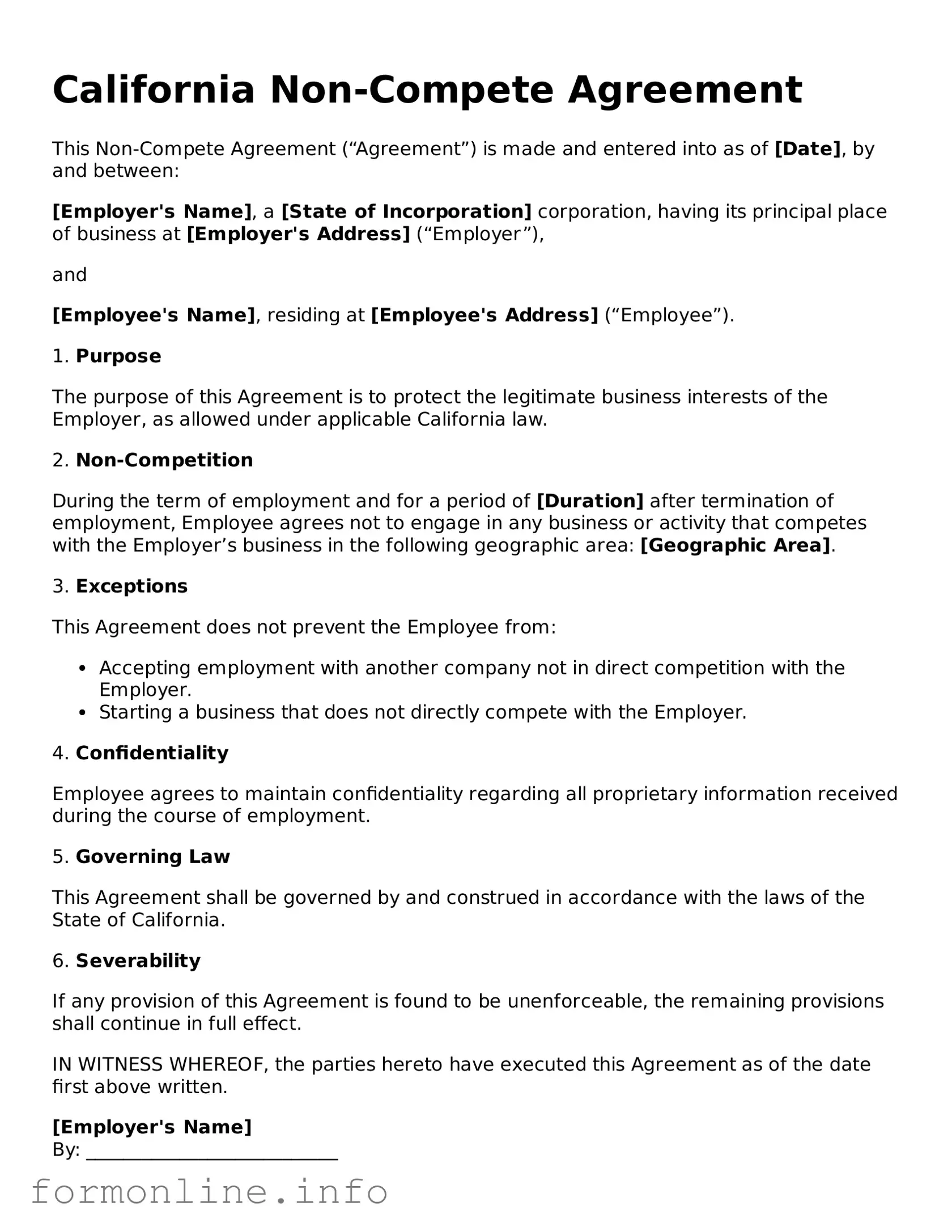California Non-Compete Agreement
This Non-Compete Agreement (“Agreement”) is made and entered into as of [Date], by and between:
[Employer's Name], a [State of Incorporation] corporation, having its principal place of business at [Employer's Address] (“Employer”),
and
[Employee's Name], residing at [Employee's Address] (“Employee”).
1. Purpose
The purpose of this Agreement is to protect the legitimate business interests of the Employer, as allowed under applicable California law.
2. Non-Competition
During the term of employment and for a period of [Duration] after termination of employment, Employee agrees not to engage in any business or activity that competes with the Employer’s business in the following geographic area: [Geographic Area].
3. Exceptions
This Agreement does not prevent the Employee from:
- Accepting employment with another company not in direct competition with the Employer.
- Starting a business that does not directly compete with the Employer.
4. Confidentiality
Employee agrees to maintain confidentiality regarding all proprietary information received during the course of employment.
5. Governing Law
This Agreement shall be governed by and construed in accordance with the laws of the State of California.
6. Severability
If any provision of this Agreement is found to be unenforceable, the remaining provisions shall continue in full effect.
IN WITNESS WHEREOF, the parties hereto have executed this Agreement as of the date first above written.
[Employer's Name]
By: ___________________________
Name: [Name of Authorized Signatory]
Title: [Title]
[Employee's Name]
Signature: ______________________
